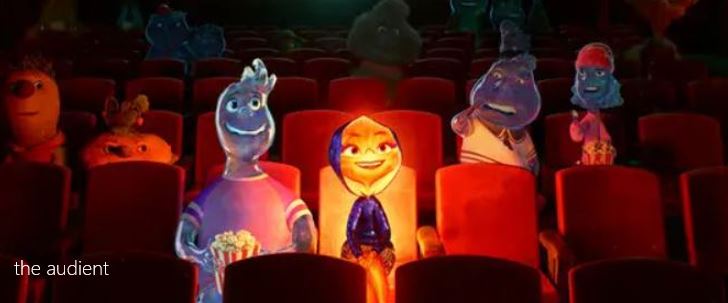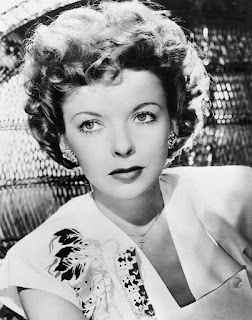This is the fifth in my 2021 noir series.
There are a number of things I'm learning about film noir as this series goes on, and one of them is that noir encompasses quite a wide range of films -- and in fact, more and more feels like a time period in which a certain type of film was made than a genre unto itself. (Or possibly that people misapply the label.)
I was looking for something short to watch on Monday night after returning from a day trip for work that required driving an hour and 20 minutes in each direction, and again I slept poorly the night before. (If this seems like deja vu, I wrote about these same conditions last week when I talked about this year's Oscars, having done a similar day trip.) So I pulled up the Kanopy app on AppleTV and came across The Hitch-Hiker, which barely cracked 70 minutes.
Of course, the length was not the first thing that drew me to it. Rather, I'd heard it discussed on Filmspotting last year when they were doing an overlooked auteurs marathon focusing on mid-century female directors, Ida Lupino being one of those. They discussed this film, and though I don't remember a word they said about it -- I like to "listen loosely" when a film I haven't seen is being discussed -- I did remember that they liked it.
But the third factor that really helped me choose it for Monday night is that it was listed as a film noir in the brief summary on Kanopy. I have plenty of candidates for this series and was only a few days into the new month, so I could have waited, but a bird in the hand beats two in the bush.
If asked to place The Hitch-Hiker in a genre myself, I probably would have chosen the generic designation "crime film." In fact, so ahead of its time was Lupino's film that I think of it almost as a New Hollywood creation or even an independent film from the 1980s or 1990s, except that of course the look of the actors and certain design details tie it to the year it was made: 1953. But it occurred to me that the terms "film noir" and crime film" could be used interchangeably, as almost every noir would feature the commission of some sort of crime, and the related unsavory characters. I certainly think noir has elements that give it its own distinctive feel, but maybe narrowing the definition to only movies with femme fatales and detectives (or characters who function as detectives, narratively speaking) does the whole term a disservice.
One element I would have previously considered noir-disqualifying is that most of this film takes place during the day. It's the story of two men who are traveling from California to Mexico on a fishing trip, who make the ill-fated decision to pick up a hitchhiker (or "hitch-hiker," as the term was apparently known at the time). The hitchhiker in question happens to be on a killing spree. I wondered if they'd never seen a movie that made them aware of the dangers of picking up strangers by the side of the road, but maybe that wasn't actually a thing back then. Maybe this is the movie other people watched as a cautionary tale.
Another non-noir detail is that there is no femme fatale -- in fact, there's nary a woman in the entire film, if memory serves. That seems especially interesting since the film is directed by a woman, but she is content to step entirely out of her own perspective here -- if only because maybe that was the only way she would have been allowed to make the movie at the time.
The men are played by Edmond O'Brien and Frank Lovejoy, and though they seemed familiar to me, I didn't realize until after the film that O'Brien should be quite familiar to me -- as the star of the last movie I watched for this series. That's right, O'Brien was the lead in my April movie, D.O.A., which I didn't like half as much as I liked this. The interesting thing was that as I was watching him, I thought he actually sort of reminded me of the inspiration for this series: Humphrey Bogart. As a measure of how my appreciation for Bogart has yet to grow during this series (having still only watched one of his films in this series, In a Lonely Place), I think I actually prefer O'Brien.
While those two give sort of interchangeable performances -- not in a bad way -- the real standout here is William Talman as the sadistic hitchhiker. He's a real menace, though I appreciated how his character was, generally speaking, not merely nasty for the sake of it. I guess that comment requires some clarifying, as I just called him "sadistic." He can be mean for sure, and mess with people for sport -- there's a scene where he makes one of the two men, who is an excellent shot, shoot a beer can out of the other's hand in a William Tell situation. (That's right, William Talman doing William Tell.) But there are any number of situations where the men try to escape or otherwise contradict his wishes, and he doesn't punish them. That could be because he needs them, or believes he does, on his escape attempt into Mexico. But I also just think it's because he's a human being and he doesn't need to do the worst possible thing in every scenario for us to loathe him. The loathing he earns from us is more human-sized.
There isn't really a lot to the story and the movie itself is quite brief, only 71 minutes. So why did I like it so much? Hard to say. I really respect the filmmaking as Lupino brings quite a sense of distinction and sense of precision to it. As I alluded to earlier, it contains nary a feminine element to it. I mention that not because it is "better" for her to have made a movie that would most likely be mistaken for the work of a man, but just because I find it interesting. According to Wikipedia, she was the first woman ever to direct a film noir. (Which lends a second opinion to this film's correct categorization as noir.) She was also an actress, and you can tell when you see her photo:
Again, judging only the book by its cover, this does not at all conform to my expectations of how a person who makes a gritty crime thriller should look. I don't know, maybe I expected her to look more like this:
The Hitch-Hiker is basically a B movie elevated by its superior elements. Maybe because of its Mexican setting or maybe because of the dynamic between the characters, I was actually sort of reminded of my favorite Bogart film, which is decidedly not noir: The Treasure of the Sierra Madre. It's a story of what men do when they don't trust each other and are caught in a scenario that exacerbates that distrust. And it's a damn fine one.
Because this is another deviation from the "traditional noir" I had hoped to focus on, I'll get back into more expected territory in June with something like Kiss Me Deadly or Kansas City Confidential.




No comments:
Post a Comment